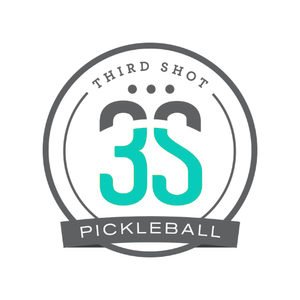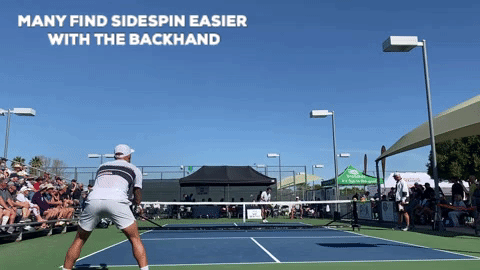By Mark Renneson
This might be another one of those articles that falls into the myth-busting category, but that's alright. Conventional wisdom is that you should avoid your backhand when possible -- and that you should aim for it when serving to your opponents.
The theory is that the backhand is a weaker or less versatile shot. But one of the things you often see from top players, is not only a willingness to hit a backhand, but often a preference for it. So why is that?
First, as servers at the top end of the sport continue to improve, we are seeing serves hit harder and with better directional control. This means that in many cases, there isn’t enough time for returners to move around the backhand even if they wanted to. If they tried, they’d likely be off balance or well out of position. So, the quality of the serve is a factor.
But the inability to avoid the backhand doesn’t tell the whole story. There are many examples of players who could avoid the backhand if the chose to, but they elect instead to hit it. Why? One answer lies in the third shot. As many of us know, the third shot is a critical moment in picklball — and this is especially true if the player hitting it is attempting a drop. If the ball sits up a little too high, it gets pounded. And if it is too low, it’s in the net. It is a a shot that requires near perfect execution or else the hitter faces disaster.
Now, a perfect drop is hard enough to hit in the best of times, but when the ball is spinning — with backspin, sidespin or both — this becomes doubly so. And it is here that we can find the value of the backhand return.
When it is well struck, the backhand lends itself to creating spin. The fact that the arm is moving across the body produces a pendulum-like action perfect for generating sidespin. This can be a real advantage when moving to the net. Additionally, many players find that when they hit a backhand, they are less likely to move unnecessary parts of their arm and wrist — biomechanical efficiency which is sometimes lost when hitting forehands.
The spin produced with a slice backhand has a way of confounding opponents. It seems like it should be easy to return, but often it isn’t. Incidentally, the usefulness of spin is one reason top players prefer playing with new paddles and used balls; a ball that is scuffed up will allow for more spin, as will a new paddle that hasn’t had the limited texture permitted on its face worn down.
Finally, some players will find that the slice backhand makes it easier to keep the ball low when hitting the return. It isn’t so much that a forehand cannot do this — it certainly can — but for many the slight high-to-low swing path feels easier on the backhand side. Travelling low over the net can be an excellent feature of a return of serve since it forces the opponents to hit upward, possibly from a weak hitting position.
So between the improved court position and the ability to hit a more challenging return, I encourage you to seriously consider improving your slice backhand. It will take some work, of course. But with a little effort, you may find your backhand is better than you think. Check the videos below to find out how to make your slice better.






